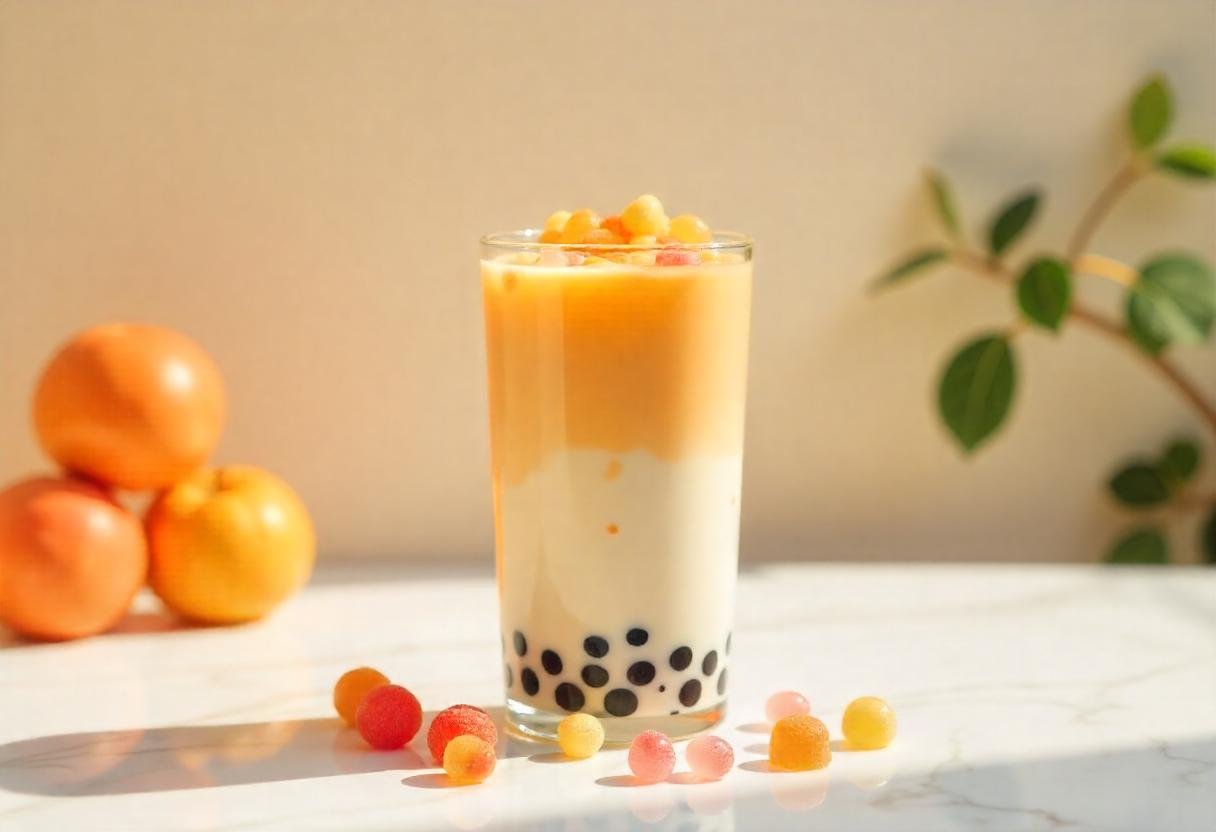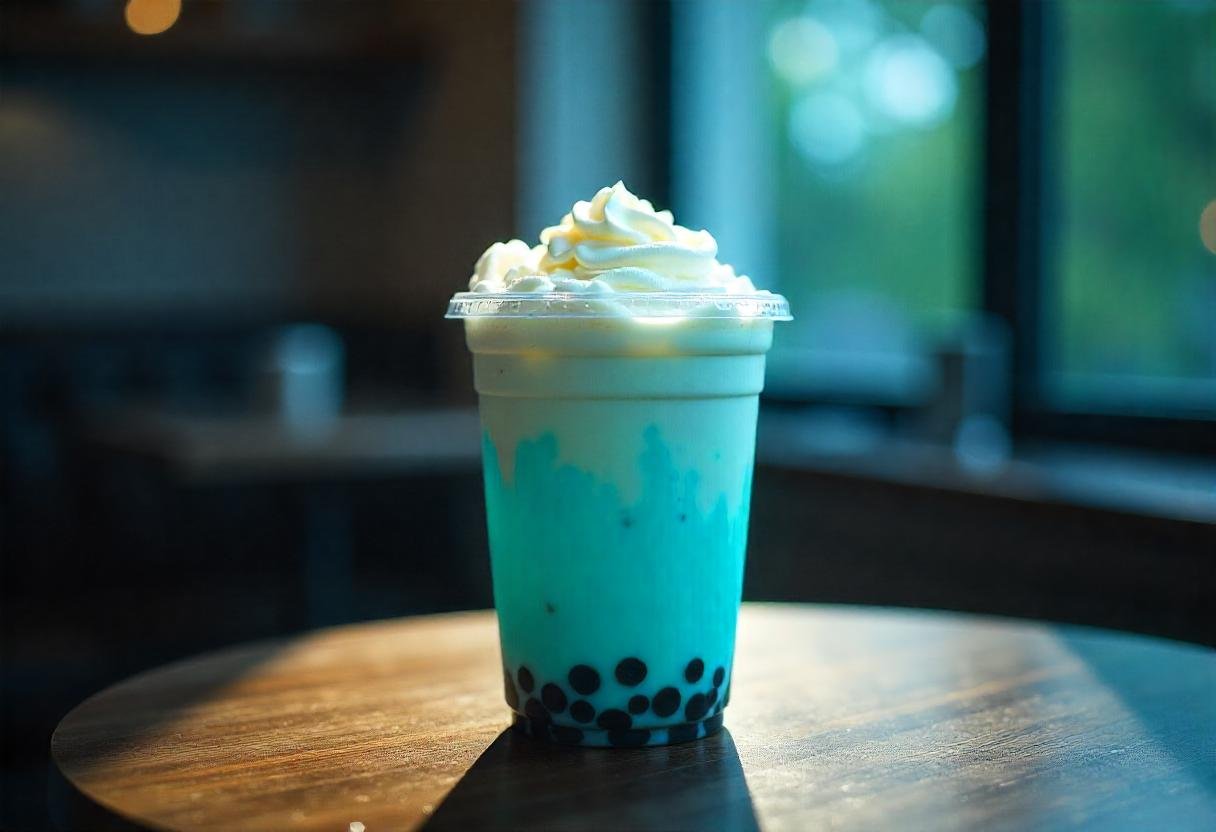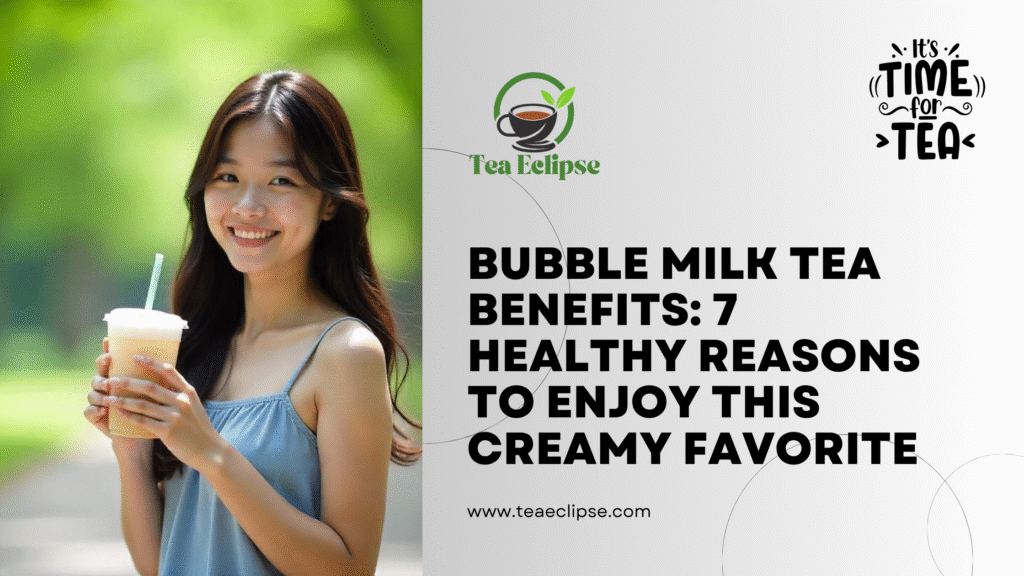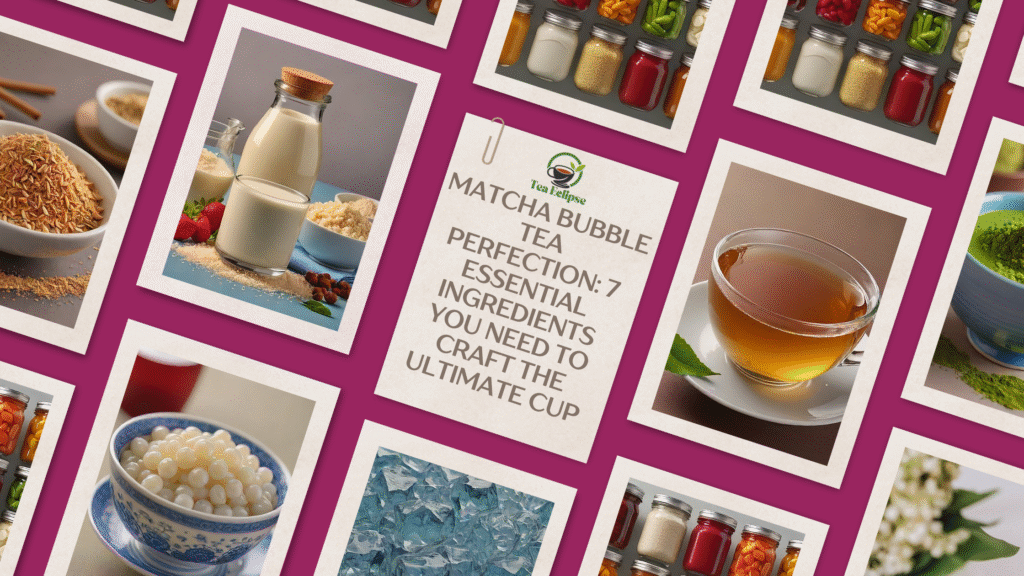Table of Contents
Introduction: Why Bubble Milk Tea Deserves More Credit
Bubble milk tea, or rather boba tea, has literally rocked the world and has become a favorite, especially among millions. Whether in coffee shops on every corner or a boy band on the internet, it’s smooth beverage and chewy balls of tapioca have led to its icon status and daily treat status.

However, as much as bubble milk tea is popular in terms of its flavour and play attributes, there is a general misrepresentation that it is unhealthy. Everyone believes it to be full of sugar, artificial stuff, and empty nutrients. Although it might be true in a few situations, this does not illustrate the entire picture.
This is because, provided it is prepared thoughtfully, bubble milk tea can surprisingly provide multiple health benefits. It turns out that there is more to this creamy fave than what could be first seen, starting with the antioxidant-filled tea base and protein-loaded milk choices to increased energy and an enhanced mood.
In this post, we will reveal 7 health-related reasons why bubble milk tea can be a pleasant addition to your daily routine, and you will not be ashamed of it.
1. Nutrient Boost from Tea Bases
Brewed tea base is a preferable ingredient to any bubble milk tea cup: it may be any of the following types: green tea, black tea, oolong tea, and jasmine tea. Such teas are palatable too, other than being sources of antioxidants, polyphenols, and catechins-protectors of the body against free radical damage.
Bubble milk tea may also have immune-enhancing, heart-friendly, and stimulating effects on metabolism, depending on the type of tea that is used. For example:
- Green tea is famous because of its ability to burn fat and cleanse.
- Black tea promotes the heart and vitality.
- Oolong tea is also commended due to its capability to improve metabolism and help in digestion.
Bubble milk tea can even be nutritious in a way that it provides substantial nutritional value when it is cooked using actual freshly brewed tea (instead of instant powders).
2. Energy Lift Without Excess Caffeine
Tea gives a gentler and more sustained energy supply, unlike coffee, which in most cases supplies a harsh surge and subsequent shock. This is because tea is made up of natural caffeine with L-theanine, which is an amino acid that causes calm focus and lowers jitters.
This fact qualifies bubble milk tea as the drink of someone who may have to be wide awake all through the day but does not want to risk ruining his/her day by drinking too much caffeine. Caffeine content is based on the tea base but is usually less than in coffee, and thus should not be the preferred choice of drinks by stimulant-sensitive people.
A cup of bubble milk tea will provide you with the energy you need, regardless of whether you have to tackle some work, study, or just get through the long afternoon: it will not crash.
3. Calcium and Protein from Milk or Milk Alternatives
Of course, milk is one of the core ingredients of bubble milk tea, and although it can be regular dairy milk or a plant milk alternative, the beverage will provide you with a lot more than a smack of creaminess.
A traditional milk cow adds ga ood portion of calcium, vitamin D, and protein, and these elements are fundamental in the strengthening of bones, teeth, and muscles. These nutrients are highly essential to growing teens, older adults, and also to all people who are leading a hectic lifestyle.
When individuals have an allergy to the consumption of dairy products, the almond, oat, or soy milk is equally favorable. A big handful of them is enriched with calcium and B vitamins and vitamin D, and some are richer in protein naturally, such as soy milk. They also have a higher content of unsaturated than saturated fat and are, therefore, heart-friendly.
Regardless of whether you prefer that or not, milk in bubble tea can help you get your quota of nutrients in your daily diet, though a combination of a proper serving portion and sweetener content.
4. Customizable for Healthier Choices

The most excellent aspect of bubble milk tea is that one can consume it in a manner that suits his or her health objective. Contrary to the majority of processed beverages, bubble tea can be customized almost completely, starting with the level of sweetness to the choice of toppings.
Numerous tea houses and home-made recipes enable you to:
- Adjust the sugar level, or go completely sugar-free
- Choose your milk, including low-fat, non-dairy, or high-protein options
- Control the portion size to fit your dietary needs
You can also swap out traditional tapioca pearls for healthier toppings like chia seeds, aloe vera cubes, or even basil seeds, which offer added fiber, antioxidants, and digestive benefits.
With a few smart choices, bubble milk tea can go from an indulgent dessert to a well-balanced, enjoyable beverage that fits your lifestyle.
5. Supports Hydration (When Made Right)
Bubble milk tea, simply, begins with by hydrating foundation that consists of water and brewed tea. It can form part of your daily fluid intake, especially if you have problems drinking plain water all through the day, when prepared with less sugar and using lighter milk.
Although certain variations of bubble milk tea are likely to be too sweet or creamy, you can simply make it more hydrating by:
- Choosing a tea-forward ratio (more tea, less milk)
- Requesting reduced sugar or skipping sweeteners altogether
- Using light or plant-based milk instead of heavy creamers
- Opting for iced versions, which can feel even more refreshing
So, with such minor adjustments, bubble milk tea may not only be a nice drink but also a method of keeping hydration at a small cost in hot weather or after any physical activity.
6. Improves Mood and Mental Wellbeing
It is not only the satisfied nutritive value, but also the high emotional appeal and the sense created by bubble milk tea that could add sensory value to your mood and promote improved mental status. The mix of sweetness, creaminess, and the fun chewiness of tapioca pearls makes the whole experience of eating such snacks multi-sensual, which can feel comfortable and gratifying to many.
The tea base can further contribute. Such teas as green or black tea consist of L-theanine, which is an amino acid that can make a person feel calm, decrease anxiety, and enhance their mental consciousness, particularly with caffeine.
You can bathe in bubble milk tea- it could be a form of self-care, a ritual that can calm you, redirect your thoughts, or give you a nap after a long, busy day. It does not matter whether you are hanging out with your friends or rewarding yourself after a tedious shift; it is a feel-good indulgence that is nurturing to the body and mind.
7. Encourages Social Connection and Enjoyment

Bubble milk tea represents a drink, but it is more than that; it is a drinking experience that unites people. Be it when you meet at one place, hang out on the weekend to get bubble tea, or simply hold a fun DIY party, it can provide time together for bonding and happy feelings.
It has even opened the door to cultural experiences, as many of them were exposed to the Taiwanese food culture and became curious about the drinks and snacks of the rest of the world. Drinking bubble milk tea with other people may bring about new discussions, experiences, and customs.
It also has mental health advantages to take pleasure in the food and drink in social places. Research indicates that eating with others and sharing treats proves to improve mood, de-stress, and make one feel connected and part of something–all necessary ingredients to emotional wellbeing.
Conclusion: Bubble Milk Tea Is More Than Just a Sweet Treat
Even though the bubble milk tea is really a guilty pleasure, once there are the right ingredients, and correctness of the consumption of the type of drink, it becomes healthier, mood-uplifting, and socially meaningful.
The bubble milk tea with its antioxidant tea base was more than just a good snack because of the possibility of making customizations and adding nutrients. It is a source of energy, makes a person focused, unites the nation, and, what is more, it is tasty.
Therefore, when you want to have something sweet next time, do not go with soda; have something smarter to drink. Don’t forget to always crisp with more healthy combinations that can work on your body and lifestyle.
Explore More Details – Click to Learn!
What is your bubble milk tea favorite combination? Leave your favorite recipe or order in the comments below, and we want to know it!
FAQs About Bubble Milk Tea
Does bubble milk always have high sugar content?
Not necessarily. Most stores give you an option to add or reduce the amount of sugar present or have a sugar-free alternative. The sugar load can be reduced significantly by choosing tea-based beverages with reduced syrup and using lighter milk choices.
How can bubble milk tea be ordered or made in the healthiest way available?
In more detail, choose the green or oolong tea as the base, 25-50 percent less sugar (removed), and plant or low-fat milk. The alternative topping of tapioca pearls is another source of health, and thus, this should be avoided by changing to alternatives like chia seeds or aloe vera.
Are tapioca pearls healthy?
Tapioca pearls are mainly carbohydrates and consist of quick energy, but they have minimal fiber and nutrients. They are alright in moderate use, but not as a health food. You can add healthy toppings to the drink as a way of enhancing the wholesome value of the drink.



